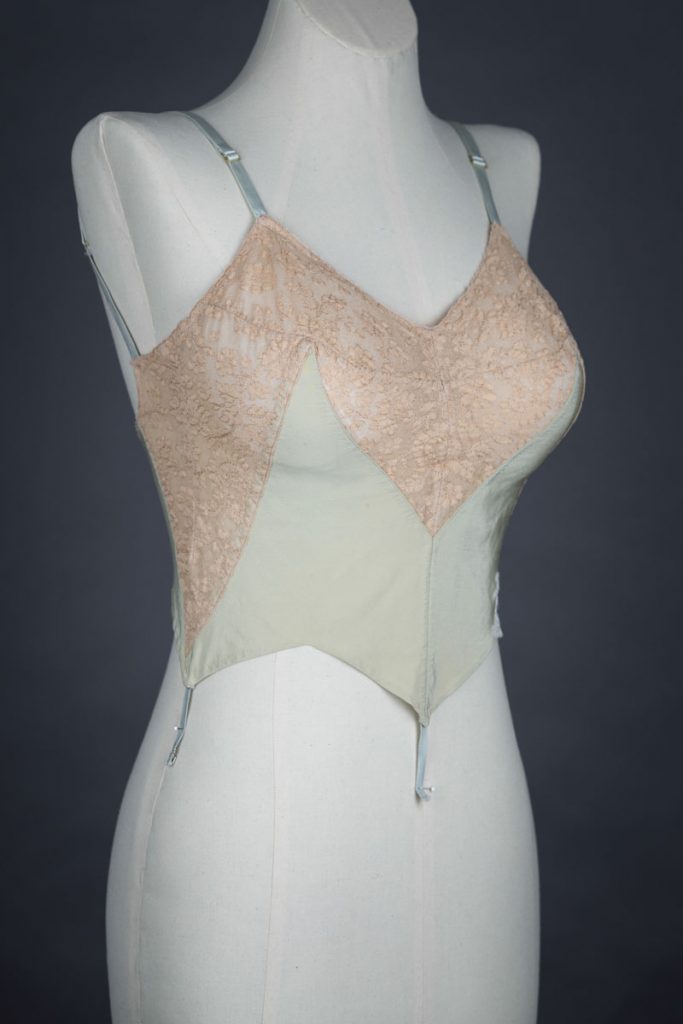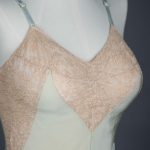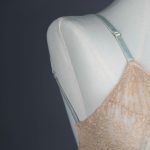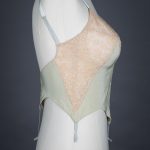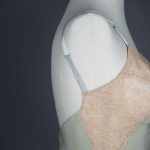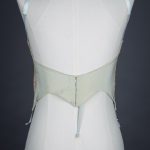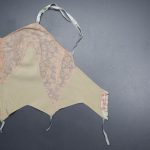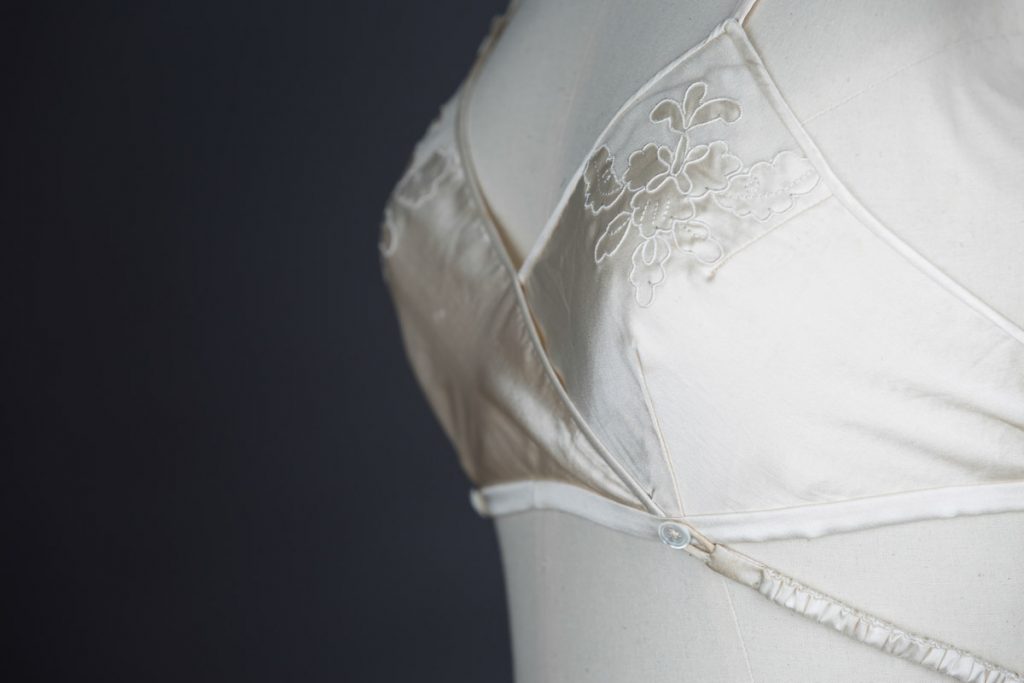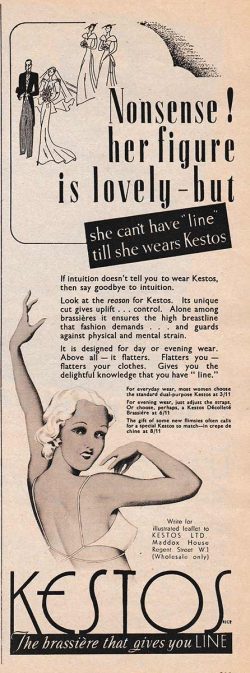The introduction of separate cups in the late 1920s improved the support and uplift provided to the breasts with increasingly complicated cup construction becoming common over the next few decades. The first stretch fibre, Lastex, was introduced in 1929 by the Dunlop Rubber Company and could be woven or knitted into one- or two-way stretch fabrics, providing a porous and lightweight alternative to rubber. Lastex was popular for use in brassiere manufacture in the 1930s because it retained its shape through much washing and wearing. Its use also meant that women whose measurements fell in-between the standard sizes were now catered for.
As uplifted breasts became a feature of the fashionable silhouette for women in the 1930s, more attention was paid to the specific elements of brassiere design that would make this possible. Fully elastic shoulder straps were trialled in the UK in the mid-30s but, perhaps because early elastics had too much stretch to be able to provide adequate support, a couple of other options proved to be more popular. Some bras featured a short section of elastic used to attach ribbon or fabric straps to the cup or to the back of the bra, and adjustable ribbon straps became more common in the late 30s.
